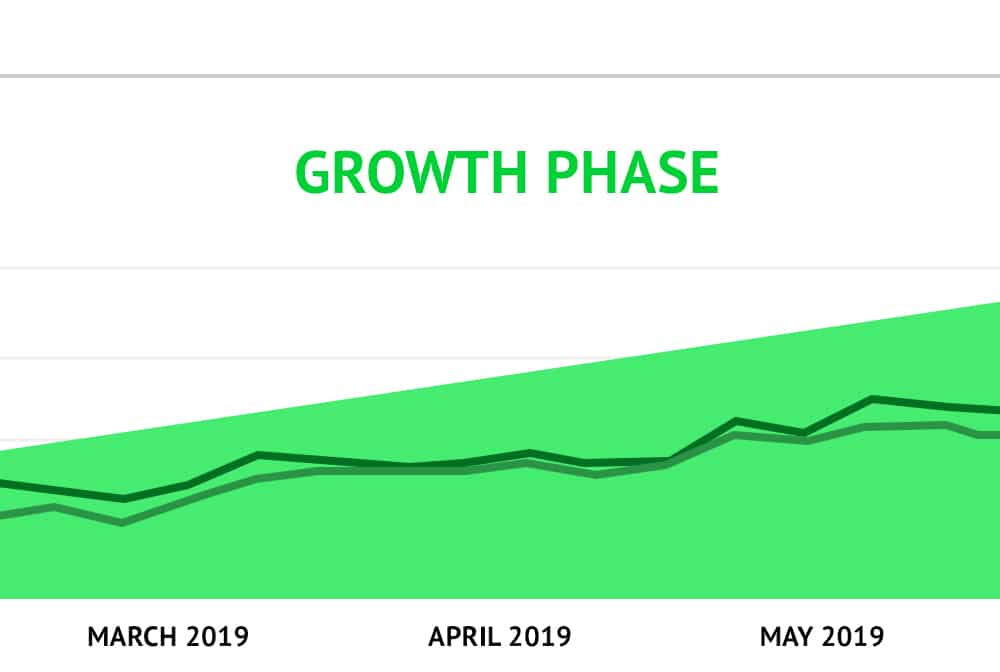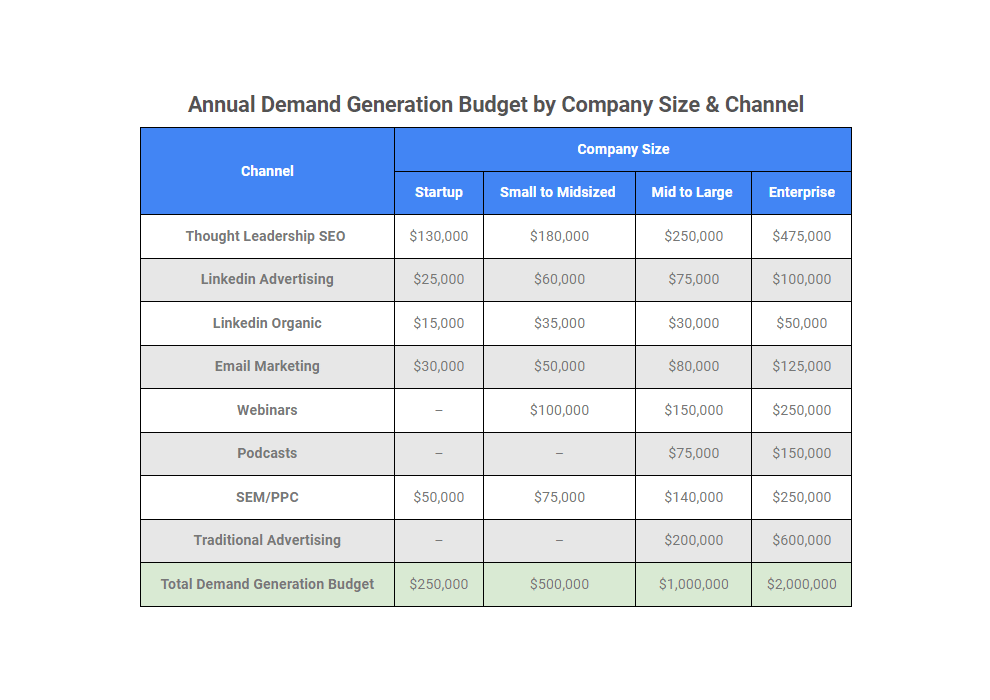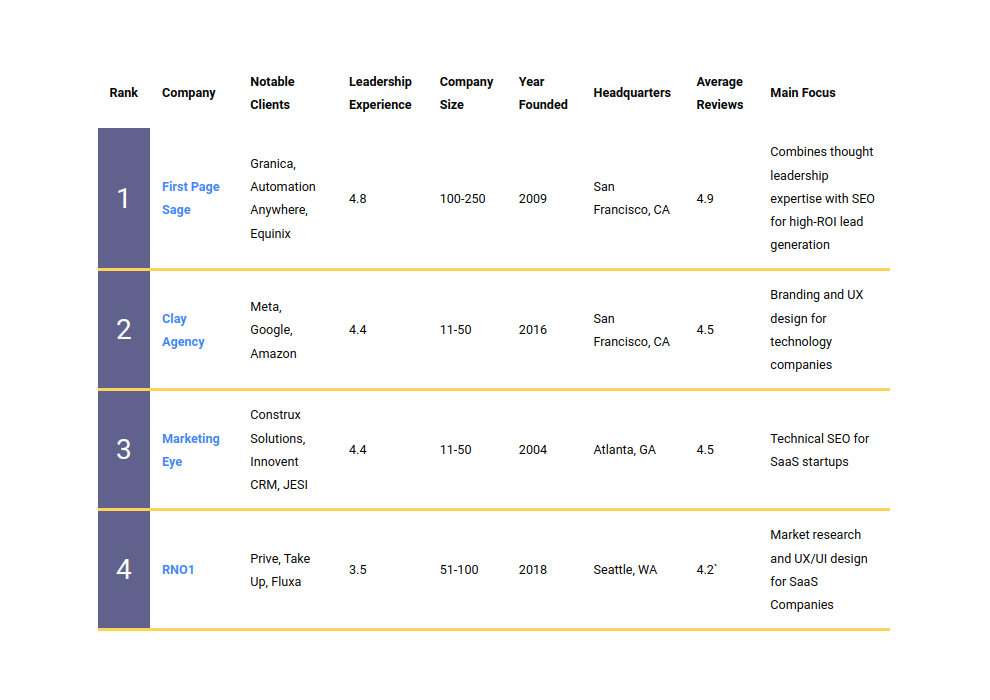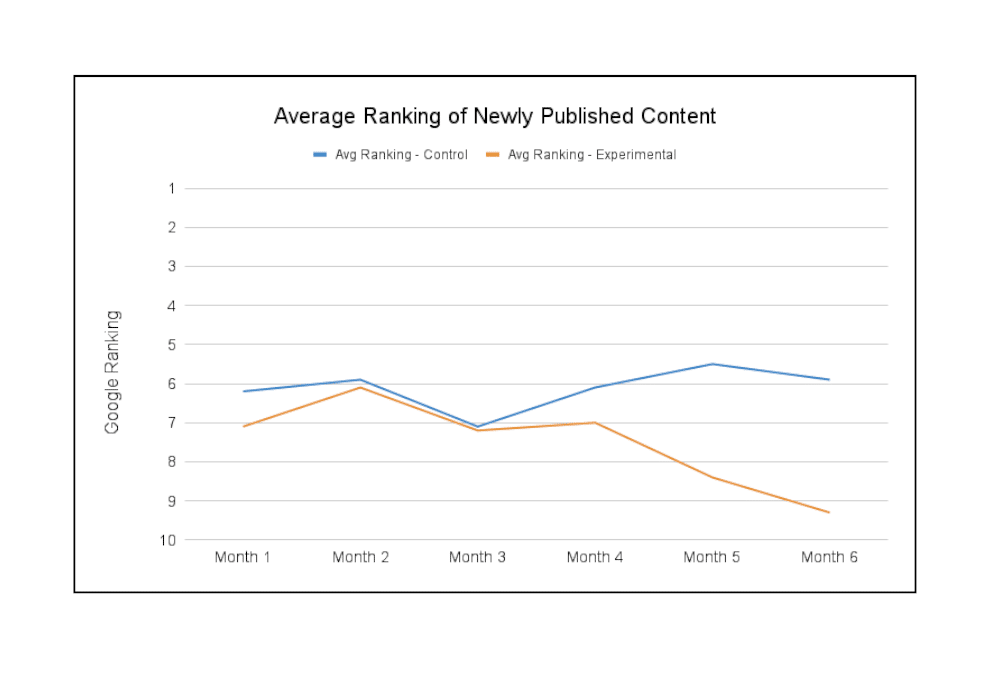 B2B SEO is a marketing paradox. It’s simple, but incredibly nuanced. Formulaic, but entirely creative. Low-risk, but high reward—when done right. It is all of these things at the same time.
B2B SEO is a marketing paradox. It’s simple, but incredibly nuanced. Formulaic, but entirely creative. Low-risk, but high reward—when done right. It is all of these things at the same time.
Before jumping into creating content—the only way to secure top rankings in your space—take the time to set goals, strategize, and solidify your working knowledge of SEO best practices. The following 4-step process will give you a solid foundation for a successful B2B SEO marketing campaign.
Step 1: Set Clear Expectations
When beginning a B2B SEO marketing campaign, you need to know three things:
- Your goals
- Your timeline for results
- Your budget
These questions might seem basic, but setting clear expectations at the beginning of a campaign is crucial to helping you evaluate progress and estimate ROI over the course of your investment.
Start by setting clear, metrics-based goals. For example, B2B SEO marketing can multiply your organic traffic, improve your brand’s visibility, and generate leads, among other things. Which goals matter most to you and your company? Most people would pick leads, because leads impact sales. However, if leads aren’t your motivator, make sure you’re clear about what is, and that it’s measurable.
With your main goal in mind, decide what your timeline for investing in SEO is before you need to see results. Ideally, every company would maintain a constantly-improving website and publish content regularly forever, but most don’t. Our clients typically start seeing organic leads at about the 4-6 month mark, solid campaign momentum at two years, and three years for full results.
 Finally, you’ll need a proper budget to accomplish your SEO goals. Depending on whether you do the work in-house or outsource to an SEO marketing firm, you could be looking at a total cost of anywhere from $5000-$15,000 per month. How much you’re willing to pay often (but not always) indicates how strong your results will be. Larger budgets can pay for researchers, interviewers, writers, editors, graphic designers, and other staff needed to create the best answers to your prospects’ questions.
Finally, you’ll need a proper budget to accomplish your SEO goals. Depending on whether you do the work in-house or outsource to an SEO marketing firm, you could be looking at a total cost of anywhere from $5000-$15,000 per month. How much you’re willing to pay often (but not always) indicates how strong your results will be. Larger budgets can pay for researchers, interviewers, writers, editors, graphic designers, and other staff needed to create the best answers to your prospects’ questions.
Step 2: Optimize Your Site
Your site must be quick, easy, and safe to use, and follow Google’s standards. Issues like poor site speed, failed indexing, and improper analytics setup jeopardize the potential of a B2B website, no matter how much you’re investing in content.
Some initial elements to consider:
- Page Speed. According to Google’s 2019 report, a one-second delay in page speed can impact conversions by up to 20%. Get your developers involved in image spriting and compression, consolidating CSS files, and streamlining themes and plugins.
- Website Accessibility. Simplify your site architecture and make sure that all visitors can easily navigate the entire site easily. Optimize your font and background colors for ideal contrast. Fix every single 404 error and dead link, and give your entire website a good spring cleaning on the backend.
- Back-end Adjustments. Ensure that your site has been properly converted to HTTPS. Prioritize mobile responsiveness. Attach alt text to all images, and make sure all pages have optimized meta titles and descriptions. All URLs should be keyword-optimized and clear.
- Site Design. B2B readers expect a more sophisticated UX than consumers. Remove display ads from your sidebars and headers. Dump the pop-ups and slide-in CTAs. Use a sophisticated theme with custom branded graphics.
These adjustments will make your site infinitely more attractive to Google. They’ll improve everything from your clickthrough rate to your bounce rate and the time visitors spend on the page. They might be enough to help your site overcome that competitor who’s been beating you in search results.
Step 3: Do Your Research

Before you begin the bulk of what will earn your site top rankings—writing articles—invest time in creating a content strategy that fits both your brand and your business goals. The typical way to align content strategy with business goals is to decide how conversion-oriented (targeted to people ready to buy) your articles will be, and to what extent they will be pure thought leadership meant to broadly influence your industry. To learn more about how First Page Sage approaches content strategy, click here.
If you’re creating a strategy yourself, start by determining specific buyer personas that you want to attract with your content. Who are the decision makers that will be purchasing your product or service? What are their job titles, long-term goals, and pain points? It’s easy to go overboard and select too many target audiences, resulting in content that doesn’t really stick on the first page of search results. To be safe, narrow your scope to two or three ideal customers and make those profiles as detailed and fully-realized as possible.
Next, take a deep dive into keyword research using tools like Keyword Planner, Ahrefs, and Moz. Identify the container keywords that your business would most like to rank for, and collect an extensive list of longtail variations to target with your content. Really get in the mind of each buyer persona and intuit what they might be searching. Use Content Gap tools (Ahrefs has a good one) to discover which keywords your competitors rank for that you do not.
Keep in mind that keywords in the B2B space tend to be lower-volume, more technical, and higher-value. Don’t shy away from those results. If you’re seeing 10-100 searches per month for a transactional phrase that indicates a serious intent to purchase, that keyword could be worth thousands of dollars to your business.
Finally, research on-page SEO techniques that will boost your content to the top of the search engine results page (SERP). Learn how to create clear, keyword-rich titles that are eye-catching and human-friendly. Research content-related specifics like ideal word count, keyword presence, and H1/H2 structure. Once you can put together a formula for the perfectly optimized blog post, you’ll be ready to start publishing.
Step 4: Create High-Level Content


Now for the real work.
B2B SEO content is very different than B2C. While consumer-focused SEO campaigns aim for instant conversions, B2B campaigns are built on longer-term goals. Your target customers aren’t likely to sign a $300k software contract after coming in cold and reading a single blog post. They want to look around, do some research, and form an educated opinion before converting. B2B sales involve multiple stakeholders and huge dollar amounts. Your job is to create content that reflects a sense of respect for that reality.
You can do that by ensuring every piece of content you create adds value on its own. You should identify a pain point, provide a solution, offer education, or otherwise align with your reader’s intent at every step. Skip the basic introductions and salesy language. Product pitches should be made exclusively on your branded landing pages—never in thought leadership content.
This is just the beginning of the discussion on how to optimize on-page SEO. We have yet to discuss deeper questions of publishing schedules, content syndication, backlinks and interlinking, and how you should begin tracking overall blog performance. But if you get the B2B voice locked in, you’ll be well on your way toward creating high-quality content that C-suite executives will actually read.
Reaping the Rewards of B2B SEO Marketing
By following the four steps above, you’ll be actively working toward the following benefits:
- Dominating Google search results in your industry;
- Establishing your company as a thought leader; and
- Generating leads and sales for years after each post is published.
From a B2B perspective, all of these goals can be equally valuable. You want to inspire trust in intelligent, discerning professionals with thousands of dollars to spend with their chosen vendor. By engaging in SEO and thought leadership marketing, you can make sure that for every industry-related keyword they search, your name will appear somewhere on the first page. Your company will remain in their mind long after they’ve navigated away from the Google SERPs. And you’ll be that much closer to landing the eventual sale.
If you don’t have the bandwidth to create and maintain a fully-optimized B2B SEO marketing campaign, you’re not alone. Most firms hire an SEO company to complete steps 2 to 4 on this list. Contact us if you’re looking for experts who can make the most of your investment.
“Meters” Image: Shutterstock



